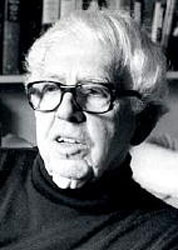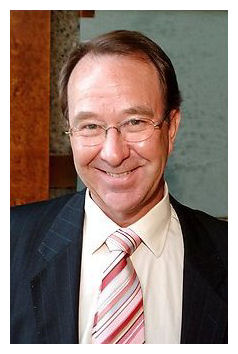
The historiography of Nazi Germany is extensive. Historians and researchers have written millions of words about the Nazi regime, its leaders, its causes and the society it created.
Historians who specialise in Nazi Germany have focused on many questions or issues. What was the source of Nazism? Were Nazi ideas a product of their times, or did they have deeper roots in German history? What motivated Hitler and what shaped his views, values and decision-making? To what extent did Hitler wield absolute power over both the Nazi Party and Germany? To what extent did ordinary Germans support the Nazis? Did most Germans back Hitler and his party – or were they indifferent or fearful of opposing the Nazis? Was Hitler’s leadership and decision-making based on a ‘master plan’, or did he make decisions spontaneously and erratically? Were World War II and the Holocaust part of Hitler’s long-term plan – or did they occur because of changing factors?
Different historians have used different approaches and theories to address these questions. Sometimes this has led to debate, even heated argument between historians. One of the more notable of these was the Historikerstreit (or ‘historians’ quarrel’) in Germany toward the end of the 1900s.
The first group to speculate about the rise of Nazism were journalists, however, they were insufficiently distant or objective to be reliable. The wounds left behind by the Nazis remained too raw for much academic research until the mid-1950s when many historians began to debate the causes, composition and nature of the Third Reich. In most accounts, Hitler was demonised as a fanatic, a racist, a political opportunist – in general, a deplorable figure unworthy of close study.

By the 1960s enough time had passed since the war to allow more objective historical studies of Hitler and the Nazi movement. The first of these was William Shirer’s The Rise and Fall of the Third Reich, published in 1960. Shirer was an American journalist who was posted in Europe for much of the 1930s, so he had first-hand experience of events in Germany.
Shirer’s historiographical perspective was that Nazism was a logical phase in Germany’s national development. This view has become known as the Sonderweg (‘special path’) school. It suggests that Nazism was no accident or aberration but a deadly culmination of German nationalism, authoritarianism and militarism – all of which date back to the Middle Ages.
Today, Shirer remains one of the most influential and widely referenced historians of this determinist school.

Historical interpretations of Nazism and its leader continued to flow during the 1970s. Some historians, like John Toland, strived for dispassionate objectivity about Hitler. Ignoring the presumption that Hitler was ‘evil’, Toland sought to identify his positive attributes and qualities, to understand why so many supported and even worshipped him.
A small clique of revisionist historians went even further, offering sympathetic accounts of Hitler and suggesting that he has been poorly treated by history and historians. David Irving’s controversial 1977 book Hitler’s War suggests that Hitler was very much a creature of his time, rather than a power-crazed madman. Irving’s Hitler is a brilliant politician who seized government not to exploit the situation, but because the situation – and the people of Germany – demanded a dictator.
By the late 1970s, two broad schools of historiographical thought about Hitler and Nazi Germany were taking shape. They were eventually described as ‘intentionalism’ and ‘functionalism’ by British left-wing historian Timothy Mason. Both offer explanations about the nature of political power, the extent of planning, the organisation of the Nazi regime and the role Hitler played in decision-making.
“Most historians now subscribe to a mix of the intentionalist and structuralist positions. No historian doubts the importance of Hitler and his ideological beliefs in determining Nazi policy. His ideological obsessions shaped the Third Reich. The Fuhrer commanded adulation and universal respect. His authority was the glue that held together the Third Reich… At the same time, though, Hitler was not omnipotent. He needed to uphold his personal popularity. Governmental disarray limited what he could achieve.”
Catherine A. Epstein, historian
One of the most significant historiographical questions relating to Nazism is explaining where it came from. The easiest explanation – one typically employed by non-historians – is to attribute the Nazi movement almost entirely to Adolf Hitler.
A similar approach is taken by intentionalist historians, who believe the Nazi Party and its ideology were manifestations of Hitler’s own political beliefs. The 25 Points, co-written by Hitler, became the party’s guidebook; Mein Kampf became its Bible. Before Hitler, the Deutsche Arbeitpartei (DAP) had been no different than any number of right-wing nationalist clubs. Within a year the Austrian newcomer had taken control of the party; within three years he was planning an ambitious and ill-fated attempt to seize control of Bavaria. Another decade and the Nazi Party held the reins of national power, largely on the back of Hitler’s oratory, charisma, determination and personal intensity.
Intentionalist historians believe that from 1933, Hitler had extensive power within the NSDAP and over the German nation. Karl Dietrich Bracher, for instance, describes the Nazi leader as the “master of the Third Reich”.
Though he acknowledges the Nazi state was less organised than outward appearances suggest, Bracher believes this was largely due to Hitler, who intentionally created multiple departments and encouraged competing interests. He did this to ‘divide and rule’, enhancing his own power by distracting those who might covet it. Bracher and other intentionalists – like Eberhard Jackel and Lucy Dawidowicz – also believe that Nazi anti-Semitism was derived from Hitler’s own personal hatreds.

The leading historian of recent times is Ian Kershaw, who has penned several books on Nazism, including a best-selling two-part biography of Hitler in the late 1990s.
Kershaw is primarily a functionalist: he has a largely negative view of Hitler’s rule. Kershaw sees the Fuhrer as a ‘lazy dictator’ who possessed absolute power but lacked the energy or attention to use it much. Hitler did not work long hours, loathed paperwork and had no interest in overseeing projects in any detail. He was reactive and unable to produce new ideas, relying instead on advisors and acolytes in his inner circle.
In this interpretation, much of the Nazi transformation which occurred in Germany in the mid- and late-1930s was not the work of Hitler, but of others ‘working towards the Fuhrer‘ – in other words, doing what they believed he would want them to do.
Kershaw is also a proponent of the ‘Hitler myth’. He contends that the Nazi leader’s political brilliance and charisma were public perceptions rather than natural or inherent traits. The political and economic turmoil of the 1920s and early 1930s helped to feed a collective view that Germany needed a national saviour, a political ‘strong man’ with a captivating personality and strength of will.
The Nazi leader’s oratory, which at other times in history would have struggled to attract an audience, thrust him into the public spotlight. Ordinary Germans began to see Hitler as a man for the times. They also projected their own hopes, fears and ambitions onto Hitler. The Nazi leader thus became many things to many people.
NSDAP propaganda tapped into this, portraying him in many ways, some of them contradictory. Hitler was portrayed as the Teutonic warrior who would crush the enemies of Germany – then the kind and fatherly protector of women and children. He could pledge to uphold the rights and conditions of German workers – while promising industrial moguls profits, prosperity and increased production. The image of Hitler as a charismatic, omnipotent saviour was conceived as a fiction, Kershaw writes, then sold to minds that craved the idea.

Two of Kershaw’s functionalist predecessors were the German historians Martin Broszat and Hans Mommsen, both of whom began writing in the 1960s.
Both Broszat and Mommsen suggest that the discipline and unity of the Nazi regime were dishonest facades. Internally, Nazi Germany was a confused storm of competing individuals and groups: government departments, the SS, the military and the NSDAP leadership. It was this competition and tension that shaped most Nazi government decisions.
With regard to Hitler, Mommsen described him by coining the phrase “weak dictator”. He argued that Hitler was a figurehead who approved or endorsed ideas that came from below, yet lacked the power to impose his own ideas on both party and state. Both historians also endorsed the concept of “cumulative radicalisation”: as competition between Nazi groups intensified, their policies and actions became more radical as they sought to outdo each other. This radicalisation eventually led to war and racial genocide.
© Alpha History 2018. Content on this page may not be republished or distributed without permission. For more information please refer to our Terms of Use.
This page was written by Jennifer Llewellyn, Jim Southey and Steve Thompson. To reference this page, use the following citation:
J. Llewellyn et al, “The historiography of Nazi Germany”, Alpha History, accessed [today’s date], https://alphahistory.com/nazigermany/historiography-of-nazi-germany/.
